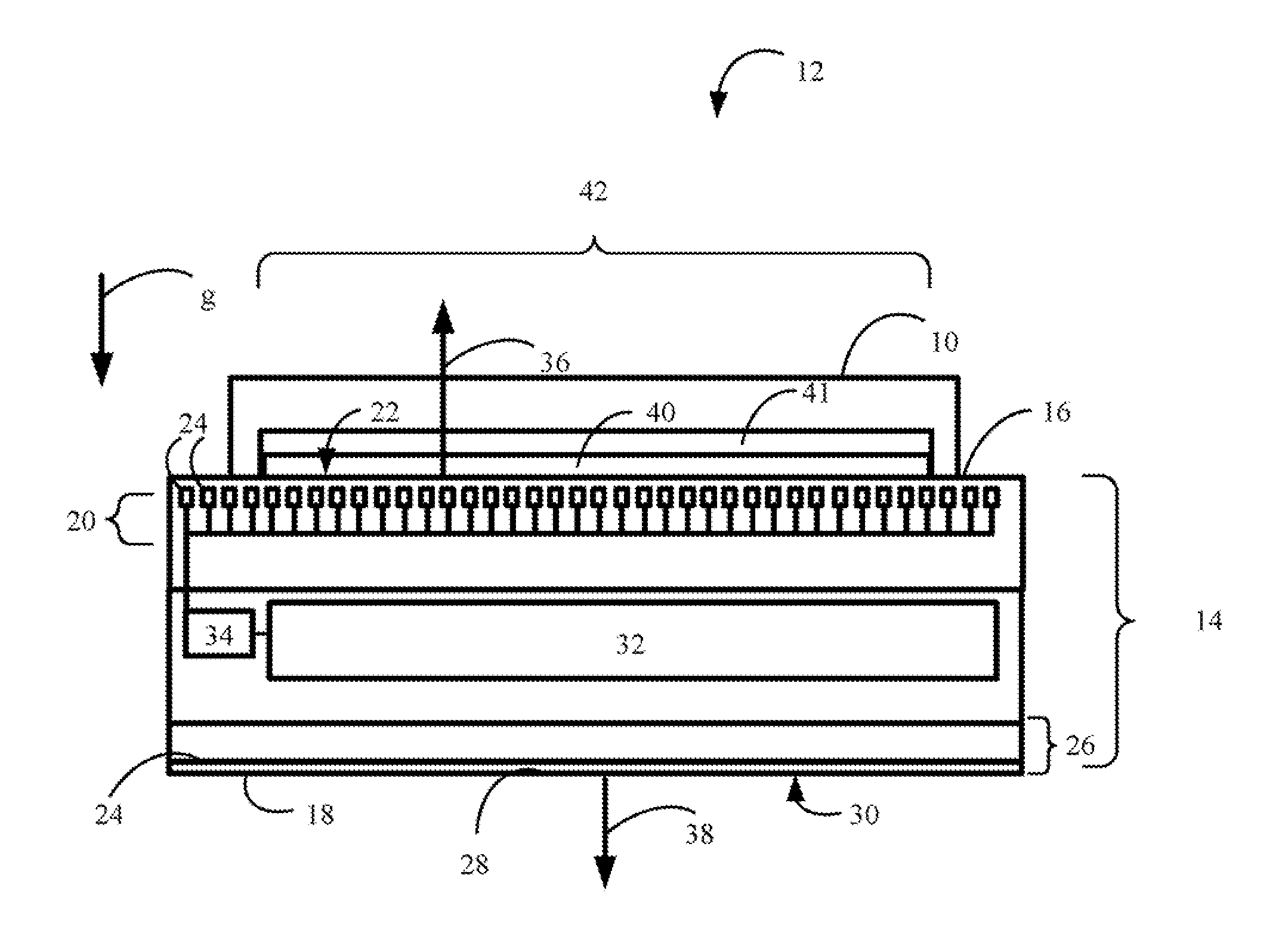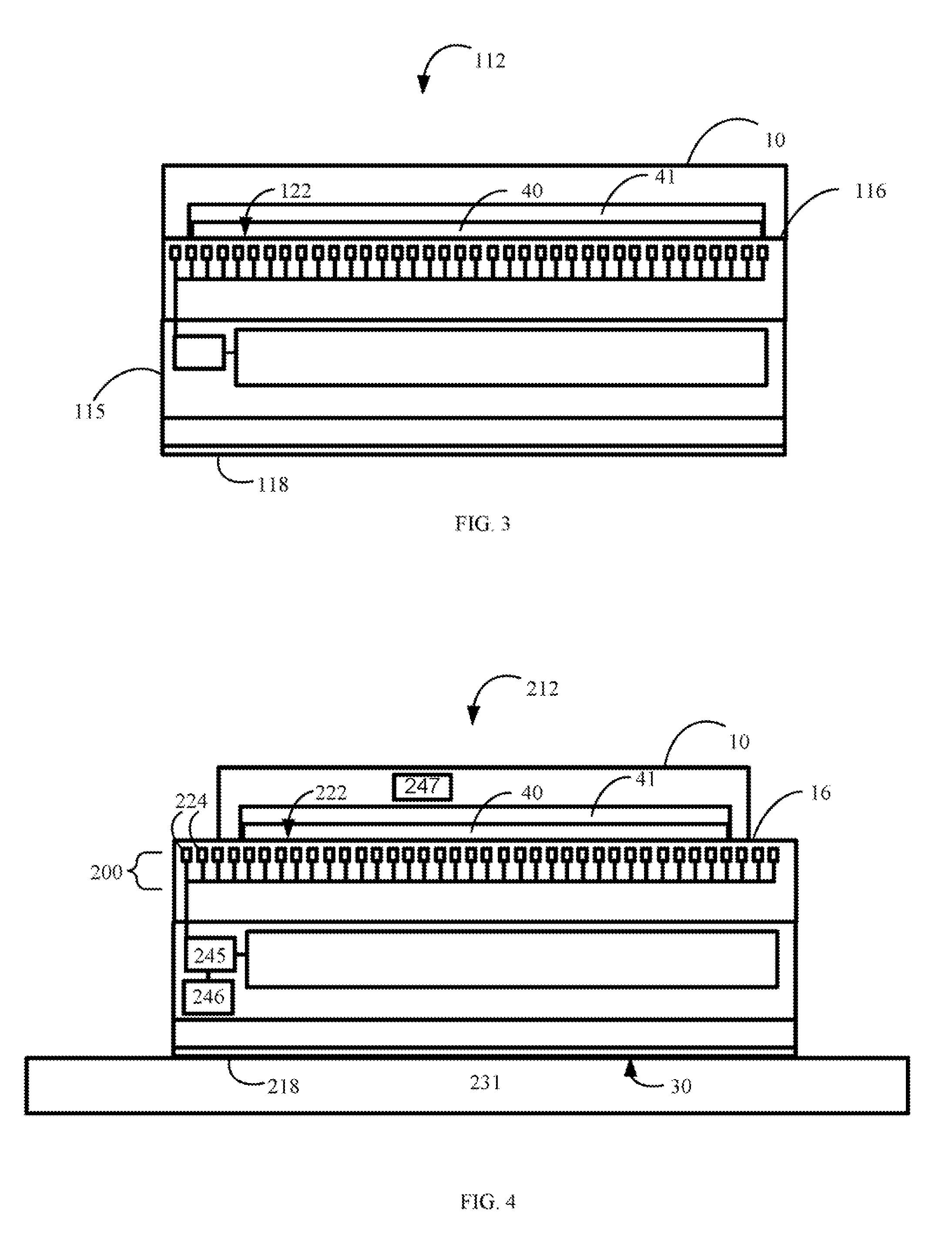Portable charging station and method for charging portable electronic devices
a technology of electronic devices and portable charging stations, which is applied in the direction of electric vehicles, electric power, transportation and packaging, etc., can solve the problems of increasing the size of the power storage device, e.g., the battery, and the energy consumption of the sam
- Summary
- Abstract
- Description
- Claims
- Application Information
AI Technical Summary
Benefits of technology
Problems solved by technology
Method used
Image
Examples
Embodiment Construction
[0017]Referring to FIG. 1 one example of the present invention for use in charging an electrical device 10 includes a charging station 12. Charging station 12 includes a body 14 having opposed sides 16 and 18. A source of light 20 is included within body 14 to impinge optical energy upon side 16. In this manner, optical energy produced by source 20 travels toward a mounting surface 22 and impinges upon objects resting on mounting surface 22, such as electrical device 10. Thus, side 16 of body 14 is fabricated from a material that allows optical energy from source 20 to propagate therethrough. Although any type of light source may be employed, such as a single incandescent light (not shown) or fluorescent light (not shown). In the present example, however, source 20 consists of a plurality of point light sources 24. Any type of point light sources may be employed, such as light emitting diodes, laser diodes and the like.
[0018]Disposed proximate to side 18 is a photovoltaic transducer...
PUM
 Login to View More
Login to View More Abstract
Description
Claims
Application Information
 Login to View More
Login to View More - R&D
- Intellectual Property
- Life Sciences
- Materials
- Tech Scout
- Unparalleled Data Quality
- Higher Quality Content
- 60% Fewer Hallucinations
Browse by: Latest US Patents, China's latest patents, Technical Efficacy Thesaurus, Application Domain, Technology Topic, Popular Technical Reports.
© 2025 PatSnap. All rights reserved.Legal|Privacy policy|Modern Slavery Act Transparency Statement|Sitemap|About US| Contact US: help@patsnap.com



